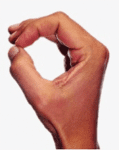Letters to the editor
Mexico officially outlawed the Siesta on 1st June 1944, by Presidential decree. English-speakers in the US and elsewhere had anticipated the change after an announcement in a TIME magazine article on 15th May 1944. It was big news, even during World War II. The Siesta was not entirely eliminated—it was simply limited in time to one hour. The concern was heavy traffic in Mexico City, resulting from people travelling at mid-day to take a Siesta at home.
Missing your Siesta once may be a relatively minor violation of your normal physiology. Your symptoms may simply include drowsiness, inattentiveness, difficulty focusing, and being grouchy. But what if you miss your Siesta every day for 5 years? Does sleeping longer at night make up for the loss? No one really knows for sure. Let’s go back to the reasons why we experience unpleasant symptoms when we miss our Siesta. Some researchers think that it may be related to the effects of gravity on the brain (1-3).
Research involving gravity in the brain has only recently considered ischemia. What is ischemia? Ischemia occurs when you press the tip of your thumb firmly against the tip of your index finger, and both nail beds turn white. Why do the nail beds turn white? Because you squeezed most of the blood out of them.

What about your brain? Gravity is continuously pulling it toward the center of the earth. But your brain does not actually move—very much. It moves slightly toward the part of the skull bone that is directly underneath it. It pushes against the skull bone slightly. Some investigators think that some of the blood is pushed out of the brain tissue closest to the underlying skull bone. Reduced blood flow can last for only a certain amount of time, before it becomes an irreversible injury—which is sometimes serious.
In any given body position, from upright to horizontal, the ‘top’ half of the brain (farthest from the center of the earth) is sitting on the ‘bottom’ half as a weight-burden1-5. Our head and body positions are roughly vertical for 16 hours a day, and then roughly horizontal for 8 hours at night during sleep. During our vertical (upright) and waking hours of the day, the brainstem is located toward the ‘bottom’ of the brain where it may incur the most ‘gravitational ischemia’—by compression of its blood vessels under the weight of the over-lying brain mass, which reduces blood flow, and reduces the delivery of nutrients and oxygen to the tissue involved. Contained there are significant components of the reticular activating system, which mediates arousal, alertness, and wakefulness. Gradually increasing levels of regional gravitational ischemia occurring throughout the day are associated with increasing fatigue, and finally drowsiness.
Thinking like a ‘skin nurse’
An interesting approach to managing a similar problem is used in hospitals today by the ‘skin nurse’, who takes care of immobile patients, who have ischemic skin breakdown, bed sores, and decubitus ulcers, caused by the weight of their bodies sitting on their underlying skin. These problems are currently controlled by frequent changes in general body positioning, focused on the effects of gravity, to reduce pressure on the damaged skin. Gravitational ischemia in the brain may potentially be largely preventable by occasionally changing the head tilt—as would typically occur normally when changing from an upright waking position to a more horizontal resting position.
For The Yucatan Times
Howard Jaster, MD
[email protected]
—
 Howard Jaster, MD, is a US-born brain research physician. Since 2002, he has been working for London Corporation, and working mostly out of London UK, and Kuala Lumpur, Malaysia.
Howard Jaster, MD, is a US-born brain research physician. Since 2002, he has been working for London Corporation, and working mostly out of London UK, and Kuala Lumpur, Malaysia.
References:
1. Jaster JH. Gravity in the brain—how compressive ischemic changes in the weight-bearing brainstem autonomic nuclei may contribute to vascular endothelial dysfunction elsewhere in the body following sleep deprivation.
American Journal of Physiology-Heart and Circulatory Physiology 2021;
https://journals.physiology.org/doi/pdf/10.1152/ajpheart.00059.2021
Free On-line.
2. Jaster JH. Gravity in the brain—how it may regulate skeletal muscle metabolism by balancing compressive ischemic changes in the weight-bearing pituitary and hypothalamus. Physiological Reports 2021;9:e14878. doi: 10.14814/phy2.14878.
https://physoc.onlinelibrary.wiley.com/doi/epdf/10.14814/phy2.14878
Free On-line.
3. Jaster JH. Gravitational ischemia in the brain—may explain why we sleep, and why we dream. AME Medical Journal 2021;6:11. doi:10.21037/amj-20-116. https://amj.amegroups.com/article/view/6037/pdf
Free On-line.
4. Jaster JH, Ottaviani G. Gravity-induced ischemia in the brain—and prone positioning for COVID-19 patients breathing spontaneously. Acute and Critical Care 2022 Feb;37(1):131-133. doi: 10.4266/acc.2021.01739. Epub 2022 Feb 28. PMID: 35279982. https://www.accjournal.org/upload/pdf/acc-2021-01739.pdf.
Free On-line.
5. Jaster JH. Gravity in the brain may be revealed by sleep deprivation studies using time‐lapsing diurnal brain magnetic resonance imaging to analyse white matter microstructural changes. Heart and Mind. 2022. DOI:10.4103/hm.hm_21_21.
[in press: Wolters Kluwer – Medknow] https://upload.wikimedia.org/wikipedia/commons/d/d7/Editorial_on_gravity_in_the_brain_by_J._Howard_Jaster%2C_MD—final_gallery_proof%2C_in_June_2021.pdf
Free On-line.


